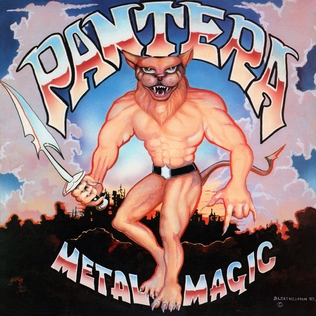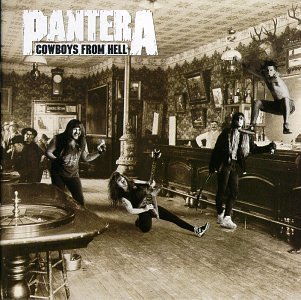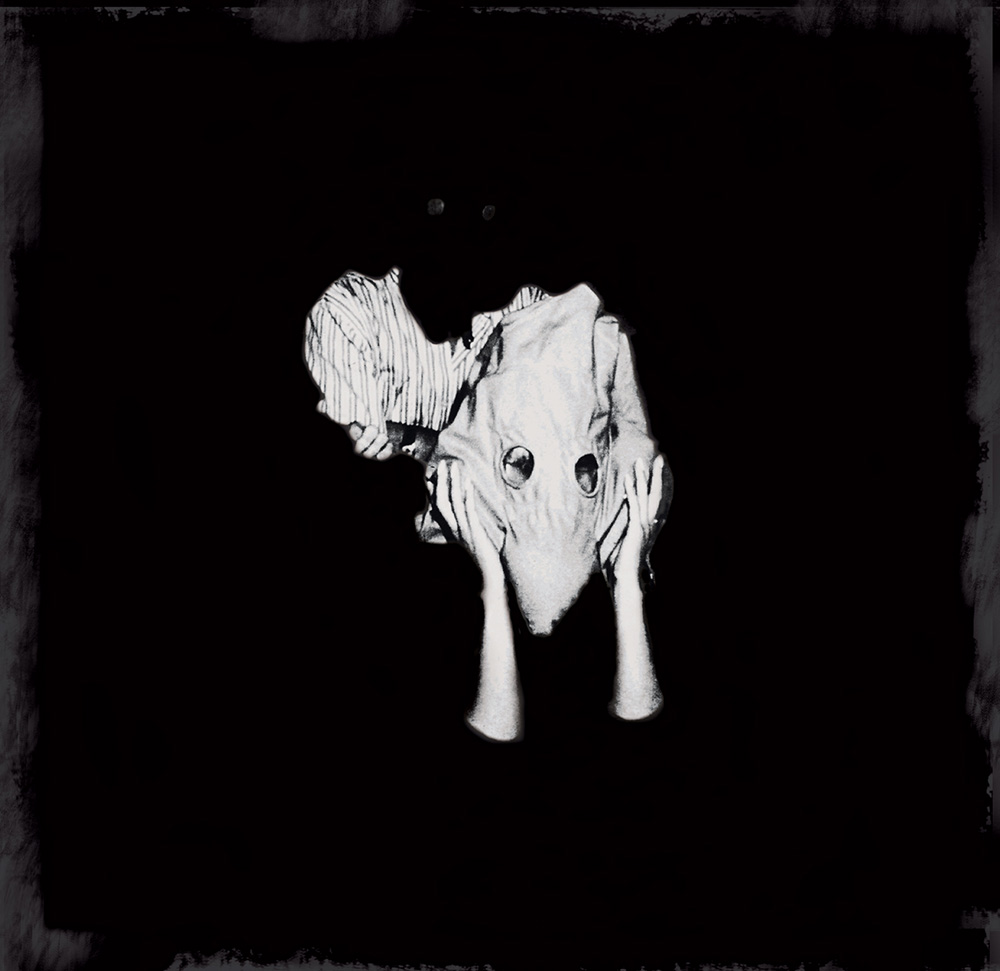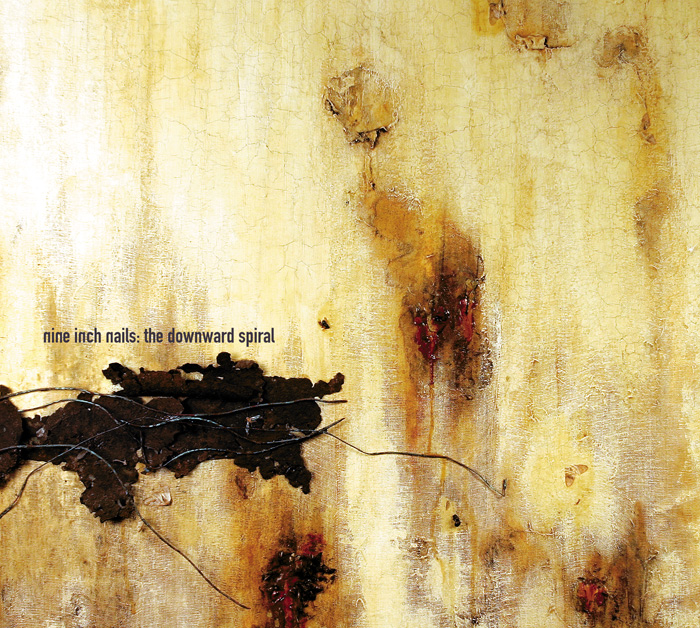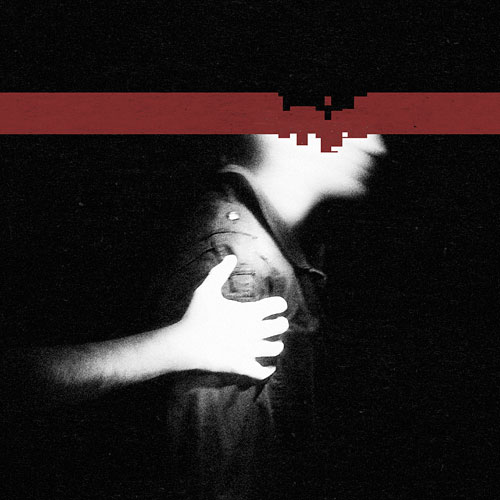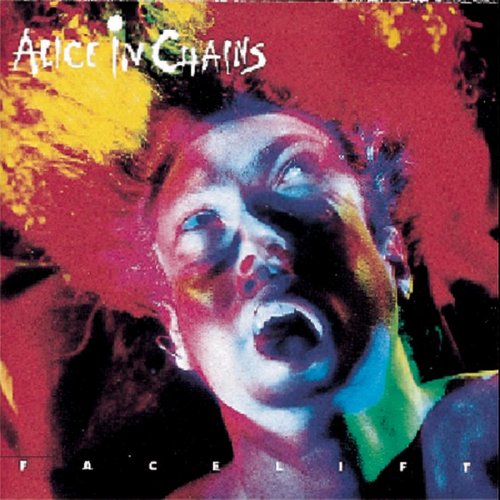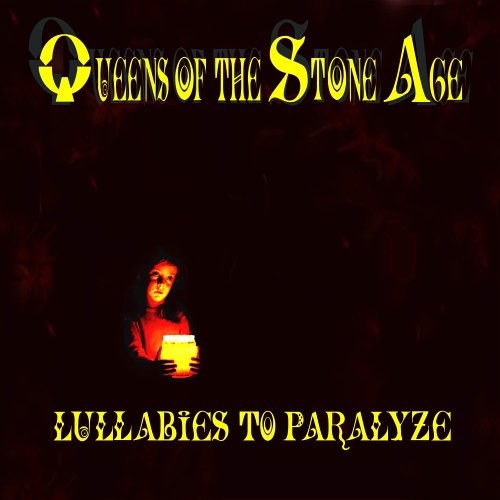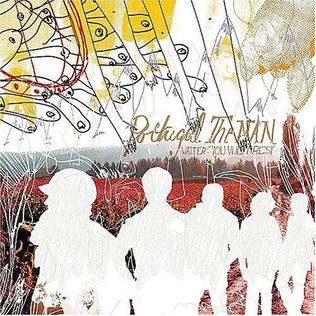Liner Notes
A blog about album art.
Tuesday, July 16, 2013
Using the Backdoor through Phil Anselmo's "Walk Through Exits Only"
Phil fuckin' Anselmo. Pan-fuckin'-tera. Do-fuckin'-wn. Maybe it doesn't work best with Down, but whenever you think of Philip H. Anselmo, one word should come to mind: fuck. Maybe it's because it's the word Phil uses in about every other sentence when addressing the crowd at concerts, or maybe it's because it's the first thing that pops into your head when you listen to Pantera, Down, or any of Phil's thrashing, hammering, blood-racing, heart-pounding heavy metal music. That being said, there's no surprise that when looking at the cover for Phil's debut solo release, Walk Through Exits Only, the same word pulses its way into your head. But instead of it being that loud, raucous, pounding "fuck" you get when hearing "Fucking Hostile" on the radio, it's more of a "fuck?" – as in, "what the ef is Phil doing here? Is he praying, or is he pondering about walking through the entrance instead?" Before dissecting this album cover wrinkle by wrinkle, let's take a closer look at Phil and Co.'s past collaborations.
Pantera wasn't always the ass-whooping, riff-making, borderline-closeted-racist heavy metal band that they're known for today. Before Phil arrived with metal-guns-a-blazed, Pantera was an 80's glam metal band that probably couldn't even invoke fear in Gary Glitter. And with a name like Pantera –– Spanish for "panther" –– you'd assume that these guys aren't into big hair, bright makeup, or tight pants. Wrong. They were all about that. Especially evident on their debut, Metal Magic. Not to be confused with the video outlining the mystical attributes of the chemical elements in your 5th grade introduction to chemistry class, Metal Magic featured hits like "Ride My Rocket" and "Tell Me If You Want It." Looking at the track listing alone makes you wonder if you're reading titles for metal songs or chapter titles for a gay porn DVD. Regardless, the metal magic died out in 1990 as Pantera finally exchanged their wands for guitars without rounded edges, and their magic hats for cowboy hats on Cowboys From Hell.
Cowboys From Hell is not only a fundamental album on the thrash-metal timeline, it also serves as an elementary starting point for Photoshopping. It's no doubt the Quick Selection or Pen tools could have created an album like this in less than 10 minutes today, so for what it was worth in the 1990's, people were no doubt impressed at this level of photo manipulation magic –– er, mastery. These cowboys –– after having hopped off their magic dragons –– rode on into 1992 with arguably the most pain-inducing, gut-wrenching metal covers of all time, Vulgar Display of Power.
No other album cover bulldozes its way through you as 'Vulgar' does. At this point, Pantera had finally washed away all the glitter from their earlier days, yet their Photoshopping skills were not nearly as wizardly, as evident on their final album, Reinventing the Steel.
This cover is not only made up of maybe three layers at the most, but could potentially have been made in a design contest for a middle school graphic design class by a hormonal 14-year-old obsessed with fire and gets off on typing "naked" into Google image search when he's at his friends house.
Aside from Pantera, Phil's 20th-century work has been mostly dedicated to Down –– the blues-metal supergroup who sings about New Orleans and weed. Unlike Pantera, Down's album art is pretty standard for the metal community –– mostly black, grungy texture, the occasional cross or fleur-de-lis making an appearance. Alternatively, Phil's Walk Through Exits Only shows a middle-aged man who's had his fair share of microphones-to-the-head. Each Pantera album invokes a "fuck!" inside of you based off either its adrenaline-pounding images or poor Photoshopping skills. Yet his debut release embarks on a different kind of "fuck" –– more of a "fuck?" We question this because we're not sure what Phil is doing. At any moment, Phil can look up from his state of somber gaze and yell at us, "fuck!" or the image could pan out to reveal his somber gaze to be from a massive shit he's taking that requires utmost concentration (or because he just realized he ran out of toilet paper). This uncertainty requires us to keep the question mark, but all questions aside, Walk Through Exits Only proves one thing: Phil Anselmo ain't no wand-waving magician. He's a metal-making sorcerer.
Wednesday, June 26, 2013
Heimskulegur with Sigur Ros' "Kveikur"
Icelandic natives Sigur Ros –– often confused with being the Icelandic cover band of famed 90's outfit Sugar Ray –– recently released their seventh studio album, Kveikur. Like all things you read about Iceland on the internet, you're not sure whether you're looking at something written in Icelandic, or if the author had a stroke while typing. Regardless, listeners looking at Sigur's newest release have no problem asking themselves, "hvað í fjandanum er ég að horfa á." Despite the undarlegt cover, Sigur Ros's Kveikur is sure to be your favorite Icelandic import of the year (next to pönnukaka of course!).
Iceland seems to only be in the news when they start to inconvenience the rest of the world: the 2010 volcanic eruptions that left thousands of European travelers stranded at airports; every time Bjork performs at a large-scale music event and wears a swan. Bottom line: Iceland is one big #FirstWorldProblem. So it comes at a surprise when the rest of the world begins to react positively to an Icelandic band like Sigur Ros, especially since the band sings most of their songs in Icelandic –– yes, that's Icelandic, not your CD player playing backwards. Other than being from a place that celebrates New Year's by setting shit on fire – in America, we call that the Los Angeles Lakers winning – Sigur Ros is known for their outrageous album covers and Kveikur definitely does not fall short.
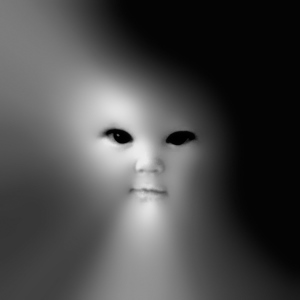 |
| Perspective matters. |
Have you ever been looking for something in your attic and accidentally come across your mom's old antique doll collection? Well imagine that same feeling when looking for Sugar Ray's 1997 classic Floored but come across this terror instead. Keeping in line with baby-themed album covers, Sigur Ros released their second album, Ágætis byrjun, featuring a praying winged-fetus with either a huge shlong or his small intestine where his umbilical cord should be.
Judging by the shape of its head, the baby either has fetal alcohol syndrome or it's really just a creature from Alien. A band hadn't shown this much interest in young children and infants since Gary Glitter in the 70's. After experimenting with babies and fetuses, the band decided to strip down and let their pylsas hang out on 2008's Með suð í eyrum við spilum endalaust.
First floating fetuses and now flying phallics – this band has established themselves as a force that refuses to chaff. As long as you apply baby powder and/or lotion, Kveikur is sure to continue this trend.
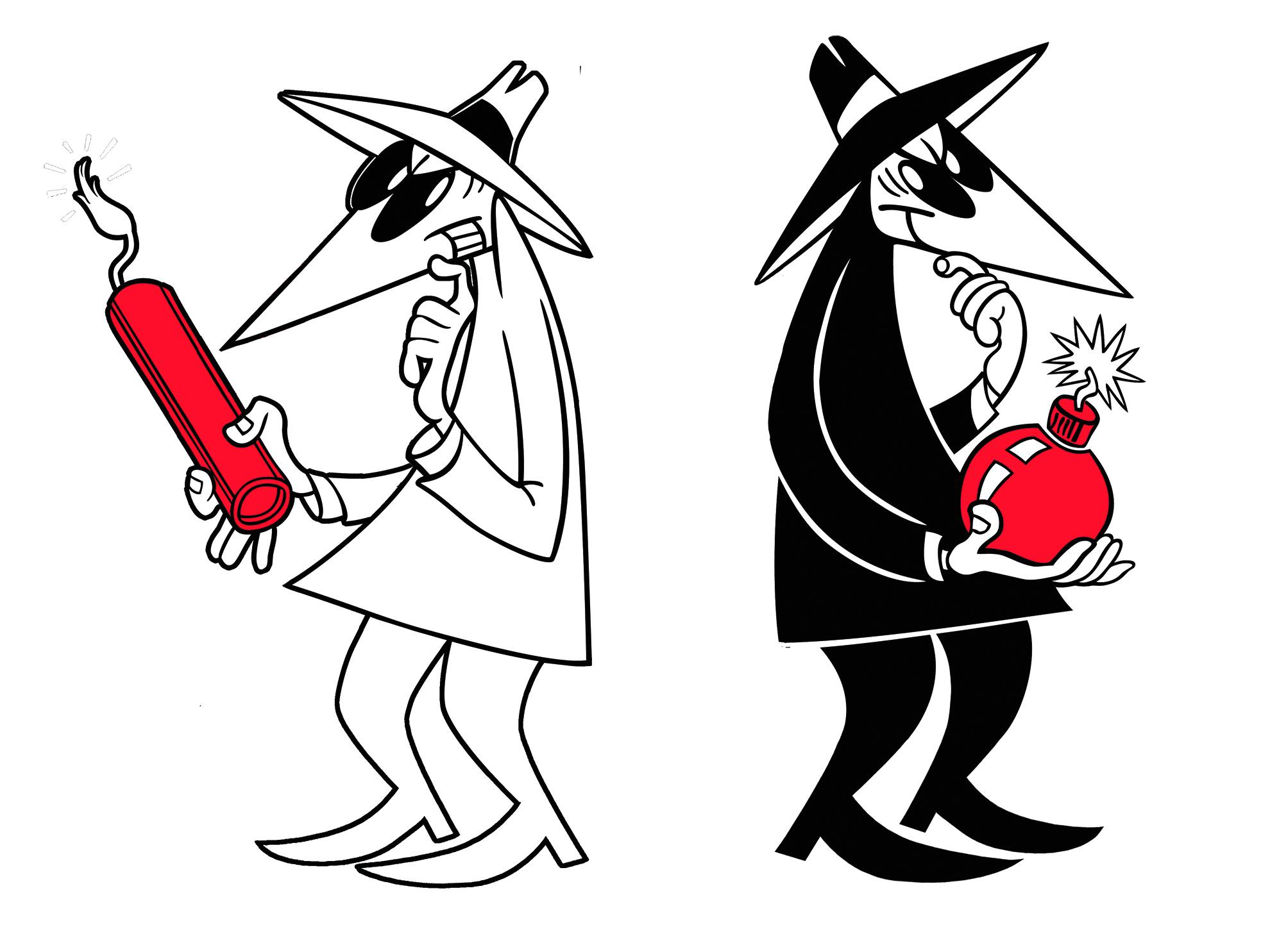 The design element of Kveikur shares a few similarities with Von – heavy black and white tones, unused space, extremely frightening image centered on the cover. At first glance, it looks as if a white-hooded person is being attacked by a black-hooded person. Maybe it's some type of social Icelandic commentary on the KKK? More likely though, it's just another classic scene from MAD Magazine's Spy vs. Spy (the White Spy is always so oblivious to what the Black Spy is up to – but I wouldn't be surprised if he's got a bomb hidden under his skyrta!). Whatever the case, one thing's for certain: you better hope this isn't hiding behind any copies of Sugar Ray's timeless socio-environmental album about an endangered breed, Music for Cougars, at the music store or you're in for another shock.
The design element of Kveikur shares a few similarities with Von – heavy black and white tones, unused space, extremely frightening image centered on the cover. At first glance, it looks as if a white-hooded person is being attacked by a black-hooded person. Maybe it's some type of social Icelandic commentary on the KKK? More likely though, it's just another classic scene from MAD Magazine's Spy vs. Spy (the White Spy is always so oblivious to what the Black Spy is up to – but I wouldn't be surprised if he's got a bomb hidden under his skyrta!). Whatever the case, one thing's for certain: you better hope this isn't hiding behind any copies of Sugar Ray's timeless socio-environmental album about an endangered breed, Music for Cougars, at the music store or you're in for another shock.
Tuesday, June 18, 2013
Doubting "Hesitation Marks"
 |
| Cover art for NIN's new album, Tortured by Tuxedos. |
Nine Inch Nails' albums have always reflected their sound – industrial drums, walloping bass, layers and layers of various noises, the occasional gunshot – so there's no doubt fans don't have to worry about Hesitation Marks sounding like anything they've never heard before. This kind of consistency traces all the way back to their first album, Pretty Hate Machine.
In 1989, the rock scene was still being dominated by glam bands like Motley Crüe, Posion, and Twisted Sister. But a new sound was being born on the alternative music scene thanks to bands like Soundgarden, Nirvana, and Alice in Chains who experimented with droned guitars, fast percussion, and numerous layers. In this mix was Nine Inch Nails' Pretty Hate Machine. The cover does a great job forcing you to ask yourself, "what is this that I'm looking at? Is this 'experimental'? Is that some type of robotic ribcage?" when in reality, people were asking themselves, "why is my sister's hairclip on the front cover of an album for some weird clinically depressed guy's band?" But the questions didn't stop there.
In 1994, Trent took a jump from heavy synthesizers, or "bee-boop-bo-bee-bee-boops," on Pretty Hate Machine to loud, industrial, hollowed percussions, or "boom-boom-ba-boom-ba-bo's," on The Downward Spiral.
 |
| NIN loves "Putin" you in a downward spiral. |
After returning to his former electronic-influenced artwork on 2005's With Teeth, featuring a pixel-bleeding NIN logo into a pile of...bloody pixels (am I right?) and 2008's The Slip showing some guy's head with pixels cratering into it, Trent has yet again ventured to the land of obscure, rusty, leper-skin-like album covers. Tired of destroying angels and his reputation, Trent revealed the cover for NIN's upcoming Hesitation Marks. Initial reactions to the artwork have fans reminiscing about The Downward Spiral. Yet after a second look, many are wondering if his newfound relationship with David Fincher is starting to take a toll on his artistic output. Here, we see a rusted, highly saturated blue and orange wall with cracks of red coursing through the bottom. So far, vintage NIN. Then we make our way to the top of the cover. When observing any Nine Inch Nails album, Trent wants to preemptively plant the question in our minds, "what do you think of when you think of highly-layered, industrial rock music?" Answer: FISHING. Nothing says Nine Inch Nails like fishing lines so why not put them at the most focally-important part of the album cover: at the top. Has Trent's hiatus from NIN been so long that he's lost any and all ability to make sense, or did he just spend too much time watching Deadliest Catch? Either way, NIN is back and this is one angel he won't ever destroy.
Thursday, June 6, 2013
Getting Prehistoric with "The Devil Put Dinosaurs Here"
Alice in Chains (not to be confused with the adult moviestar and scene girl, Allison Chainzzz) has returned with their second AL (Anno Layno/After Layne) album, The Devil Put Dinosaurs Here. Longtime fans of the band have always been very outspoken against replacement singer William Duvall after singer Layne Staley's untimely death in 2002. They asked questions like, "will he try to sound like Layne?" and statements like, "it's not Alice without Layne." Sure, I agree it's not truly AIC without Staley, but you can't restrict Jerry Cantrell and co. from continuing to make music under the original name they made for themselves. Would Layne want the show to go on? Most likely. Would he want them to make an album about dinosaurs? Debatable. Maybe not. Actually definitely not. Actually why the fuck is a band who has an album cover with a girl lying in dirty, dried mud now coming out with an album cover with a triceratops skull on it?
 |
| Mr. Maxell, 4th cousin to Mr. Facelift |
1992 saw the aforementioned Dirt, Alice's most prominent album to date. Within their first two years, Alice in Chains had released two albums that were not only musically advanced, but showed some pretty disturbing images sure to disrupt your perusing the cassette aisle at The Wiz (Nobody Beats the Wiz).
Bands from the 90's are notorious for adding shock-value to their album art (i.e. Black Crowes' pubey Amorica, Tool's contortionist-blowing-himself Ænema) and fans were typically pretty receptive to them.
Then AIC came out with their self-titled Alice in Chains depicting a sad three-legged dog, and rather than making you go, "Alice in Chains is so freakin' badass with these dark album covers!" you say, "awww why'd they have to do that?" And thus dawns the age of ambiguous Alice in Chains album covers.
Alice in Chains roared back into mainstream rock with 2009's Black Gives Way to Blue showing a depleted heart from what looks to be your high school anatomy textbook on a chalky black background. At the time of its release, Jerry spoke about the meaning behind the album cover and name and how it represented their reincarnation from despair, sort of like a reversed "Hey Hey, My My" ('Out of the blue and into the black'). Cool, Jerry, totally get that. But then what the hell are you doing talking about dinosaurs now? Supposedly, it has to do with some type of super religious blah blah blah bullshit. Since Jurassic Park 2 [BEGIN DINOSAUR RANT], it hasn't been cool to be down with dinosaurs if you're over the age of eight. Dinosaurs are supposed to be badass, now they're just popular kids cartoons (see Dinosaur Train).
Cartoon dinosaurs weren't always lovingly cute and stuffed-animalized –– they used to have serious concerns like, "shit, my mom is battling a dinosaur named 'Sharptooth' right now and is going to die, this sucks," (RIP Littlefoot's Mother). Now their biggest concern is, "what tropical location should I ride the Dino Train to today?" And Jerry, picking a triceratops for your band's album cover called The Devil Put Dinosaurs Here? Do you really think the devil was the one who put herbivores here? If he was, then he must be a vegetarian because no meat-lovin' devil is going to put a herbivore here. And if that's the case, the last thing I want is a vegetarian Satan telling me how he's a vegetarian. That's a hell not even hateful AIC fans would wish upon William Duvall.
Wednesday, June 5, 2013
Burning the Torch on "13"
The fathers of metal...the procreators of hard rock...the daddy's of doom...maybe not that last one, but Black Sabbath, the founders of rock's loudest and heaviest sect, is back with their newest release, 13. Ozzy Osbourne, Tony Iommi, and Geezer Butler show no age reuniting while leaving Bill Ward, their longtime drummer, as well as their health restrictions and Black Sabbath catalogue circa 1983-1995 in the dust. With their return also comes the revival of arbitrary album covers, proving that Sabbath really is back.
Being arbitrary makes up a big part of "being metal." The metal community feeds itself on "being metal." But what does it mean to be "metal"? Wearing black and studs? Being down with the devil? Combining words like "goat" and "whore" to name your band? Asking John Wayne Gacy to design your album's cover art?
 |
| John Wayne Gacy's design for Acid Bath's debut album |
 |
| GWAR disemboweling Snooki |
Before we light the torch on 13, let's take a look at some Ozzy-era Sabbath album covers. First, we have the classic self-titled Black Sabbath. No other band at the time had ever released anything like this before. With its sludgy riffs, loud bass, grizzly drums, and bellowing vocals, listening to this album for the first time is like your dad slapping you in the face after you just got a splinter pulled from your foot and yelling, "SHUT UP, YOU'RE A MAN NOW." And the cover perfectly reflects its musical style showing some creepy pale lady standing in a field behind some medieval houses, just like that one time when you and your friends decided to go camping in the Pocono's and you wandered across some territory you probably shouldn't have.
In 1973, the band came out with Sabbath Bloody Sabbath, their fifth album in just three years. The cover features a demon-possessed bed attempting to consume its subject like a Satanist version of the Ecstasy of Saint Teresa. The guy on the bed looks shocked, like, "why is my bed trying to possess me?" But let's be honest, that's what you get when you have a bed with "666" molded in at the top.
Now, over 30 years later, Ozzy has stopped hanging out with the wrong crowd (Justin Bieber in Best Buy commercials –– it's okay Ozzy, we've all had Bieber Fever before) to record a new Sabbath album. And what better way to reestablish yourself as the archetypal metal band than burn an eight-foot-tall number "13"? It may seem arbitrary, but the beauty of it comes from its simplicity –– no complex design, no agonizing graphics, just a blazing-orange "13" in a dusked blue field. Now that's metal.
Monday, June 3, 2013
Checking the Time on "...Like Clockwork"
Queens of the Stone Age returns after a six-year hiatus with their newest, weirdest, reddest release, ...Like Clockwork (typing out those "..." is going to get old really fast) showing a modern day spin on the Phantom of the Opera with some chick crying blue. Ya know, like we all do when we're held tight by a man wearing a skull mask. Lead singer Josh Homme employed his BFF Dave Grohl along with other contributors Trent Reznor, Mark Lanegan, and Queen of the Modern Age, Elton John, leaving fans to hope that they threw the most glitterly, twisted, dark get-togethers to watch the new Liberace biopic Behind the Candelabra while reading 1984. With a pretty extensive and cryptic publicity push through its release, the album leaves fans wondering, "what does it all mean??" But like wondering how to pronounce Josh Homme's last name (hom-mee? ho-mee? Gr-ohl?), sometimes it's better not to ask questions...or really wonder at all.
Queens of the Stone Age (or "Queens" or "QOTSA" or "Eagles of Death Metal" or "Them Crooked Vultures" or "anything else Josh Homme has ever done") is known for being a band that not only makes you take the time to think about their music, but also question the legitimate meaning behind their album covers. Let's take a look at their most well known release, 2002's Songs for the Deaf (what? WHAT?), a concept album about taking you on a road trip from Los Angeles to the Joshua Tree through the Bible Belt of California.
That then brings us to 2007's Era Vulgaris featuring two lovable lightbulbs, Bulby and his pal Stumpy the Pirate (how many Josh Homme's does it take to name a lightbulb?). This fluorescent duo shines brighter than any cartoon pairing I knew of growing up. Brighter than Batman and Robin, flashier than Tommy and Chuckie, shinier than Barnacle Boy and Mermaid Man – their action figures could have been luminously lovely: "Bash out some tunes with Bulby! Complete with working cigarette and razor-sharp edged head! Don't forget about his washed up pal Stumpy the Pirate, complete with hat, eyepatch, peg-leg, and refund for purchasing this album for thinking it would be good after playing '3's & 7's' in Guitar Hero!" In a perfect world, I like to think these two are best buds with the phallic-like Mandy and Brandy from Tool's Vicarious video and have crazy playdates and play "Trip Acid Like We're In A 90's German Domination Club" instead of "House" or "Doctor."
And now ...Like Clockwork has arrived. The band gained notoriety earlier in the year when they released cryptic hand-written letters to various music magazines talking about how they've been dealing with dark times, emotions, having no control, something about codeine cabarets, etc.
This lead to the release of a handful of music videos which turned out to be cartoons of mostly human beings wearing what looks to be BDSM clothing set in a Quentin Tarantino fantasy-blood-world. Combine that with a creative execution that allows fans to enter in their phone numbers and receive a weird voice message from Josh Homme and you've got a pretty cool tactic to make some buzz. But what do these themes of time, and cryptic messages, and darkness have to do with the album's cover? Nothing. Could the skeleton-mask man represent dark emotions and the woman (supposedly Homme's wife) represent how the band had no control over their direction and they let their emotions take over? Just like what we saw with Songs for the Deaf's "religious tones," this isn't a commentary on anything. It's just some guy on Photoshop who had a cool idea.
Wednesday, May 29, 2013
Doodling with "Evil Friends"
Portugal. the Man returns next week with their newest album, Evil Friends, and to get us to ignore the arbitrarily-placed period in their name, the Alaska natives come out with an album cover that looks like someone who went dressed up to Burning Man thinking it was the Gathering of the Juggalos.
Before we plunge into Portugal.'s (do I need to place the period there when using it as a possessive noun?) newest release, let's talk about their past covers.
If you thought Portugal. the Man lost their ability to question your affiliation with the band judging solely on their album covers, all has been reaffirmed with their newest release, Evil Friends. Buzz for this album began back in March when the band posted photos of defaced models in magazine advertisements. Sure, I enjoy doodling on pictures of famous people from time to time. But this isn't some amateur Hitler-stache-on-Jennifer-Aniston's-GQ-cover kind of doodling. This is the big leagues.
The band replicated this style on the cover of their eighth studio album showing a masked man with horns, two tongues, tear-filled eyes, a third eye in the middle of his forehead, some nice decorative Aztec pattern in his mouth, crying out "Evil." It's like a hipster's spin on an abu ghraib prisoner. Musically, this band's sound has stayed consistent over the last few years. But visually, gone are the days of getting high off whipits from Cheez-Wiz cans and drawing what you see. Hello to the coming of serious Alaska-grown magazine-doodling.
Subscribe to:
Comments (Atom)

